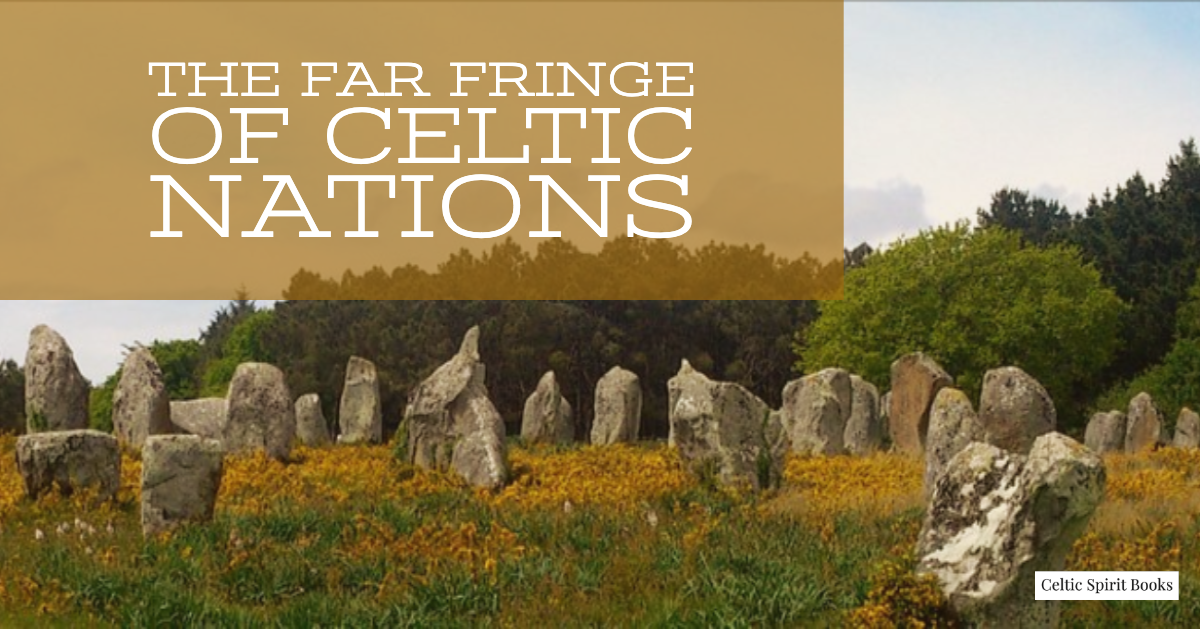The Far Fringe of Celtic Nations
“The Fringe of the Fringe” is the title of Lecture 11 of the video series Great Courses: The Celtic World, with Professor Jennifer Paxton, a program a friend recently gifted me. It refers to Brittany and Galicia, the two “add ons” to the list of the Five Celtic Nations. Brittany is the most northwestern peninsula of France and Galicia is the most northwestern peninsula of Spain. We are learning more and more about their Celtic connection and identity.
Recently, I wrote about Celtic language speaking countries being on the western fringe of the British Isles. We were speaking of Ireland, Scotland, Wales, Isle of Man and Cornwall. Because of their geography and fortitude, these lands were the least influenced by Rome. They held onto their native stories, language and cultures longer than the rest of Britain. English rule had an even stronger negative influence that eventually almost eradicated Gaelic. As we said, the strongholds that were able to revive were at the fringes. The term “Beyond the Pale” springs from the phenomenon of being beyond the attention of the English when they first ruled Dublin.
So, the fringe of the fringe seems an apt description of Brittany and Galicia, both on mainland Europe and, therefore, even more weakly linked to Celtic identity.
Brittany has a rocky coastline on the south side of the English Channel at one of its narrowest areas. I never can keep track of the back and forth between England and France, their kings, wars and allegiances. Scholars like Dr. Paxton tell it well and also chronicle the even more complicated role of Bretons in this power game. I was particularly fascinated to hear that when forced to fight for France in England, at one point the Bretons actually left battle and settled in Wales. For me, the most interesting aspect of their connection to the Celts are their Neolithic stones or menhirs. While this area is officially pre-Celtic, to me the stones of the Ancient Ones are very much the root of Celtic culture. A visit to the Carnac Stones is definitely on my bucket list.
Carnac Stones
Galicia, also is intriguing. It is known as a very unique and quite autonomous area of Spain. We most here about because it is home to Santiago de Compostela, the legendary burial place of the biblical apostle Saint James the Great, and the destination for those following the Camino de Santiago pilgrimage route. We probably all have heard about pilgrims walking over the Pyrenes Mountains from Chartres cathedral and from throughout Europe, but less has been said of the Celtic pilgrim. Recently, a pilgrimage route from St. James Gate, Dublin down through the Wicklow Mountains to the southeast corner of Ireland has been discovered. From there the pilgrims sailed to Galicia’s Cape Finisterre, then walked to Santiago. There also are legends that connect to Glastonbury and Joseph of Arimathea, the uncle of Jesus who provided the tomb for His body after the crucifixion.
When I was in school, I read that the Romans considered this area of Spain to be the end of the known world. We also may have heard of the Spanish Armada and shipwrecks along the Irish coast. “The Black Irish” were said to be of Spanish blood. But legends and scholarship now date Spanish influence much farther back. For instance, legend has it that the Beara Peninsula is named for a Spanish princess brought home by an Irish chieftan.


